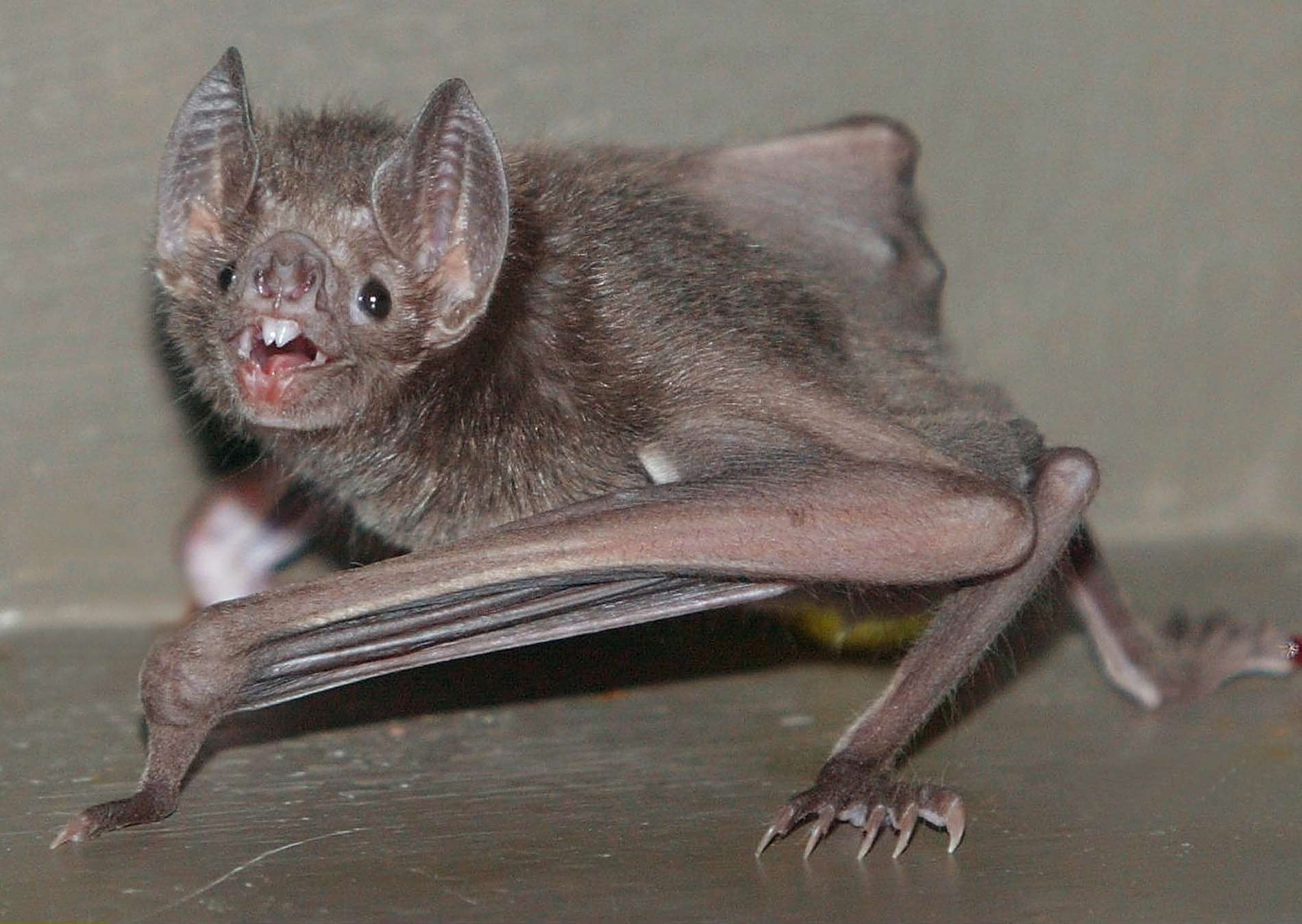Create a free profile to get unlimited access to exclusive videos, sweepstakes, and more!
Fossil of the most ginormous vampire bat ever just flew out of 100,000 years of darkness

There is a reason vampire bats are associated with Dracula, and other fictional vampires that don’t sparkle. They actually do take wing at night and suck the blood of unsuspecting victims.
Whether you think these bats are real life horror movie extras or unconventionally adorable, they are rather small and are more like mosquitoes than monsters to the animals they feed on after dark. However, during a time when everything was massive — from sloths to mammoths to cave bears — so were vampire bats of the extinct species Desmodus draculae. Their size must have made them look more frightening if nothing else.
Now, the largest D. draculae individual ever found has shown exactly how huge they could get. You can probably imagine how much blood it took to keep them flying around. Researcher Santiago Brizuela, who led a study recently published in Ameghinia, was able to find out some previously unknown things about this mega-bloodsucker from just its 100,000-year-old fossilized jawbone, which was recently discovered deep within an Argentinian cave.
“The size of D. draculae suggests a 25-30% larger skull than extant vampire bats,” Brizuela tells SYFY WIRE. “We are unsure of the volume of consumption, though daily blood consumption for vampire bats is around 13.4 ml. One would infer, based on size, that D. draculae would have consumed more.”
Jawbones of the terror from deep time were found in the burrow of a giant ground sloth. While Brizuela and his team are not exactly sure if it was an abandoned burrow the bats roosted in, or if they flew in there when they were hungry, giant sloths are believed to have been on the menu for D. draculae. It lived in parts of what is now Central and South America from the Pleistocene era through the early Holocene era. Meaning, early humans might have chanced upon the bat, though we will never really know. Instagram didn’t exist back then.
So how big was this actual vampire? D. draculae’s 20-inch wingspan must have cast an eerie shadow from above. It weighed about slightly above two ounces, which sounds like nearly nothing, but compare that to extant vampire bats, most of which are barely over 3 inches with a 6-to 7-inch wingspan. Many don’t even reach two ounces and can easily fit inside a teacup. What they can do is easily double their body weight depending on the amount of blood they ingest that night. Like most bats, vampire bats are nocturnal, and so was D. draculae.
“There are minor (but clear for systematical assignation) morphological differences in the osteology of the extant and extinct vampire bats, but overall they would be similar,” Brizuela says. “I speculate that their large size was in the general trend seen in the Cenozoic megafauna.”
Another thing D. draculae must have had in common with its living Desmodontinae relatives was the heat sensor on the end of its nose that would have allowed it to smell fresh blood. It might be great nightmare fuel, but it really just helps the bat survive like anything else that needs to eat. While there are misconceptions about vampire bats being as violent as some of their namesakes, they actually prefer to live, feed, and hang upside down in peace. It is from this known behavior that the research team inferred D. draculae must have behaved similarly despite its size advantage. Everything was humongous back then.
Why megafauna like giant vampire bats dominated the planet millions of years ago still remains shrouded in mystery. Some believe mammoths and woolly rhinos, among others, would still be around today if early humans hadn’t hunted them to extinction. Others believe they were already on the decline and would have eventually vanished anyway. What Brizuela does know is that D. draculae was the last giant flying mammal that would ever exist, and while it was still around until 1820, the Little Ice Age probably froze out this tropical creature.
“There is some uncertainty regarding its extinction,” he says. “Nonetheless, D. draculae must have suffered with the rest of the megafaunal extinction, and the cooler environmental conditions must have finally affected higher-latitude populations.”
That probably won’t stop someone out there from making a B-horror movie about a swarm of enormous vampire bats, if they haven’t done so already.


























